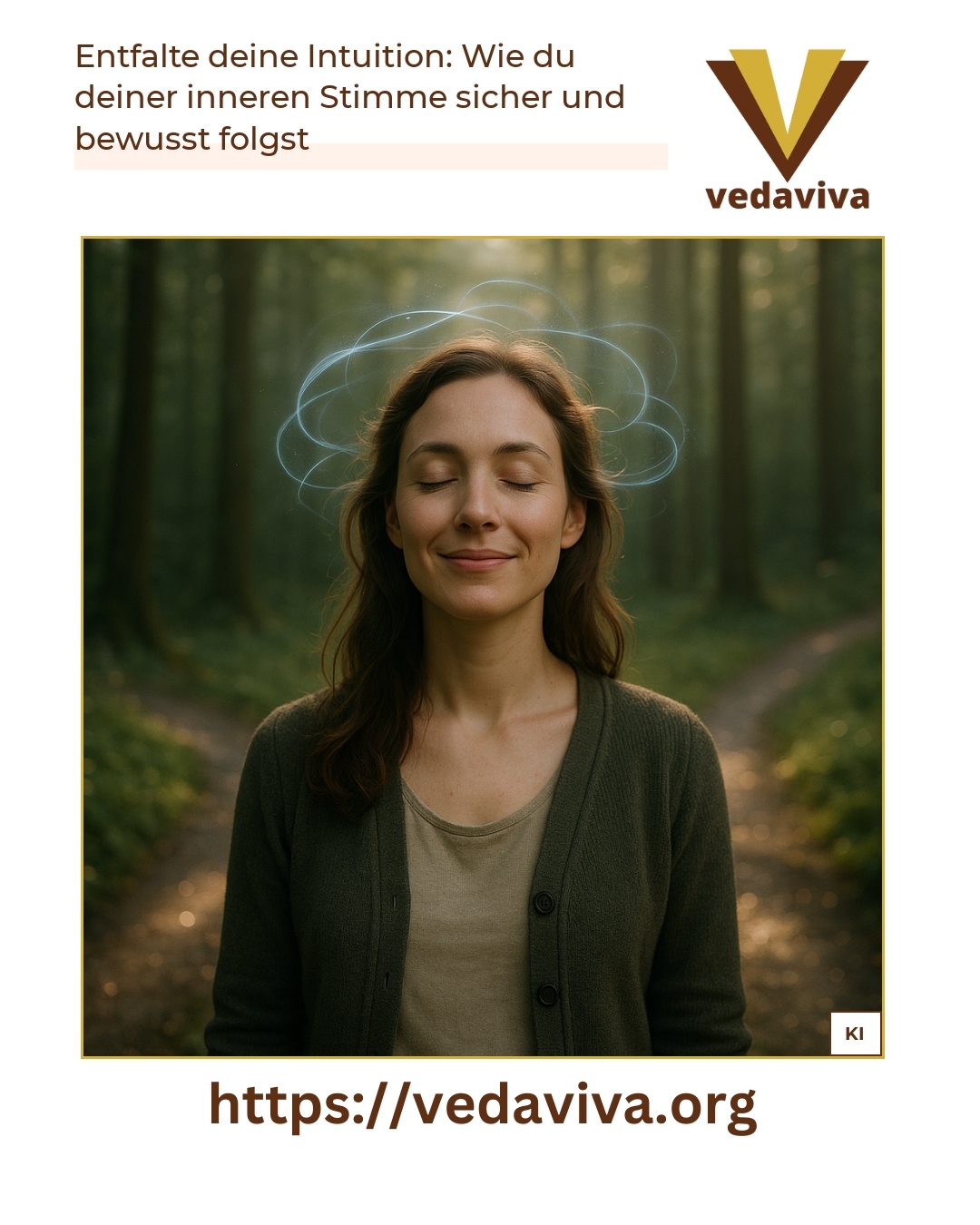Unleash the power of inner perception
Consciously recognising your own subtle intuitions opens up new perspectives for everyday life and decisions. If you observe your inner impulses carefully, you will gain more confidence over time in using them as valuable signposts. A practical way to get started is to record moments when unexpected impulses or feelings arise - for example in an intuition diary. Physical signals such as a sudden tingling sensation or a change in breathing rhythm can also be added there. This reflection helps to gradually build up a better understanding of the interplay between feelings, body and mind.
Another option is to prepare for a decision through visualisation. This involves taking an upcoming question or option and visualising it vividly in your mind: How does each option feel? What emotions arise? Physical reactions such as relaxation or tension provide additional clues. Writing down your impressions afterwards promotes awareness of your inner voice and creates space for clarity before taking action.
BEST PRACTICE at company XYZ (name changed due to NDA contract) In a management meeting, the team regularly used quiet sessions for inner reflection before making complex decisions. Each member visualised their preferred solution and reflected not only on rational arguments, but also on their intuitive feelings. The joint evaluation of these inner impulses proved to be a valuable addition that made decisions more transparent and accepted.
Deepen methods for conscious perception
One of the most fundamental practices is consciously staying in the moment, also known as mindfulness. By observing the environment and your own sensations with full attention, you gain access to subtle cues. For example, it can be helpful to pause briefly while drinking your morning coffee to notice the flavour, temperature and the feelings associated with it instead of acting lost in thought.
Regular meditation also supports learning to calm the flood of thoughts and find inner clarity. Combining breathing exercises with inner stillness creates the space to listen to the inner voice without preconceptions. Physical exercise such as yoga or gentle qigong also promotes sensitivity to the body's own signals, which often provide important information.
BEST PRACTICE at company XYZ (name changed due to NDA contract) Short daily mindfulness exercises were introduced in a creative workshop. Participants reported that their perception of moods and impulses became much more refined in both professional and private contexts. This helped them to react more spontaneously and intuitively in stressful situations.
Learning to recognise your inner voice more clearly
A key element in consciously dealing with inner impulses is distinguishing between the noise of thoughts and the actual inner voice. While many thoughts are often circular and emotionally charged, the inner perception is usually calm, precise and clear. Exemplary signals can be simple sentences such as "Avoid this now" or "This path feels right", which are accompanied by an inner peace without any great flare.
Exercises for dialogue with the inner world recommend paying attention to inner images and feelings and asking them questions. For example, you can encounter an inner image in your thoughts and explore what message it is trying to convey. This practice creates a deeper connection to your own resources and helps you to find answers to complex life questions.
BEST PRACTICE at company XYZ (name changed due to NDA contract) One manager reported how she found contact with her inner voice in a challenging situation by means of guided visualisation. By asking her inner image specific questions, she was able to find a solution that corresponded to both her gut feeling and pragmatic considerations. This method was subsequently established in her team as part of the decision-making process.
Integration into everyday life: practical examples
Consciously integrating inner perception into your daily routine creates a sustainable learning process. For example, a perception diary can help you to note down three special moments every day - be they intuitive inspirations, unexpected ideas or physical sensations. If you practise this for a few weeks, you will often develop a finer sense for the timing, clarity and quality of your impulses.
In challenging decision-making situations, it is advisable to incorporate a short meditation or breathing exercise before making the final choice in order to reduce stress and facilitate inner access. Regular reflection after decisions have been made is also helpful in order to gain experience of the effectiveness of inner impulses and to strengthen confidence.
BEST PRACTICE at company XYZ (name changed due to NDA contract) In one medium-sized company, teams were encouraged to take a short mindful break together before starting a project in order to focus on their inner voice. This practice led to improved alignment and a more harmonious work flow, as reported by the teams.
My analysis
Consciously dealing with inner perceptions offers a valuable opportunity to gain more clarity and certainty in your own actions. The combination of mindfulness, reflection and targeted exercises proves to be particularly effective. It is important to focus on supporting your own process without linking expectations to guaranteed results. Many people report that this practice gives them impulses that support them in their development and open up new ways of making decisions. In this way, access to one's own inner voice becomes a constant companion that allows trust to grow and sharpens the focus on inner resources.
Further links from the text above:
Train your intuition and make really good decisions [1]
Intuition and the sixth sense: how to train your gut feeling [2]
Trust your intuition - utilise this power - Ina Rudolph [6]
Legal notice: Coaching does not replace therapy. It serves personal development. I do not diagnose or promise a cure. My offer is for personal development and is not a substitute for medical, psychotherapeutic or curative treatment. Please consult a medically qualified specialist if you have any health complaints. The experiences described here are based on individual feedback from my clients. They are not a guarantee of success and do not replace medical or therapeutic counselling.













